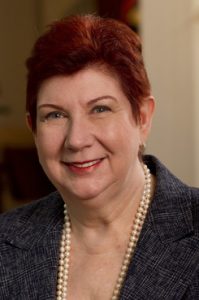How One Law Firm Planned for Growth
“We don't want our lawyers to think of themselves as belonging to a particular office but to view themselves as being in the employment law section, for example, and happening to work in the Los Angeles office.”
January 19, 2018 at 12:19 PM
5 minute read

Twenty years ago, three lawyers got together and founded Freeman Mathis & Gary. “I'm not quite sure how we decided to do it—so you can see how well thought out it was,” says founding partner Ben Mathis. In the years since, the firm has grown from three attorneys in one Atlanta office in the Galleria to nearly 130 lawyers in 14 offices across seven states.
Looking back, Mathis says the firm's growth was the result of a disciplined focus, as well as a response to clients' needs. Part One of the plan was for the founders to establish a reputation as top civil litigators. Part Two was to look for easy alliances—bringing into the firm lawyers the founders knew and respected. Part Three—and this was the most challenging—was to use its hard-earned reputation to attract laterals and mergers with other firms.
The firm quickly established itself as a leader in civil litigation. Mathis concentrated on employment litigation. His co-founding partners, Ted Freeman and Bart Gary, focused on government and construction practices, respectively. Twenty years later, the firm is still strong in its founding practice areas.
The firm grew organically at first. Its first merger (Mathis doesn't use the word “acquisition,” because it doesn't convey the cultural fusion that occurs) was in 2008 with the firm of Jack Hancock, who represented Clayton County. He is still the primary outside lawyer for the county and works out of the firm's office in Forest Park.
FMG continued to hire more attorneys as it monitored the business environment. About five years ago, the firm determined that it needed to hire lawyers in more geographic regions. The decision was driven by national insurance carriers seeking to consolidate their work among fewer firms. FMG developed a strategic plan to merge with firms that shared its primary practice areas. Expanding also would help with recruitment and retention.
The first merger under the strategic plan was in 2013 with a small, San Francisco employment firm. It gave FMG its first West Coast office. The firms were acquainted before the merger. “It was really driven by personalities,” Mathis explains. “We were very familiar with the lawyers and mutually referred clients to each other. It was a perfect fit for our foray into that expansion.”
The cultural connection is extremely important, Mathis says. “We have tried to be thoughtful. We have some real strengths and want to do what we do well,” he says, describing his firm as a specialty litigation firm that will only take cases in certain practice areas.
“We wanted to put ourselves in the position to protect our existing practices while expanding our reach,” Mathis says. The goal of the firm, he says, is to strike the elusive balance between the advantages of a large firm, such as the ability to service a single client in multiple states, with the cultural feel of a small firm, where everyone knows each other. They have walked away from mergers with excellent attorneys who worked in silos and wouldn't fit into the FMG management structure.
FMG was successful with its initial mergers with attorneys it knew well. Eventually, though, they were looking to grow more substantially. As Mathis puts it, “In a perfect world, you want to merge with people who you have long-established relationships with—but that may not work for a long-term strategy.”
Other firms were reaching the same conclusion—they needed to be part of a national group to compete. FMG already had a San Francisco presence and wanted to expand its California offices. It reached out to Gilbert Kelly in 2015, a legacy California firm with deep roots in the state that had been in operation for 76 years. Proof that cold calls work: The firms merged almost two years after that initial call. The merger was the firm's largest to date, expanding it by 25 percent and adding 31 lawyers in Los Angeles, San Francisco, San Diego and Sacramento. And earlier this year, FMG merged with a 12-lawyer financial services firm in Hermosa Beach, Calif. With nearly 60 lawyers in California, FMG has successfully made itself into a bicoastal player.
The key to the firm's management strategy is focusing on practice areas. “We don't want our lawyers to think of themselves as belonging to a particular office, but to view themselves as being in the employment law section, for example, and happening to work in the Los Angeles office,” Mathis says.
While the practice areas work together across the country, a firmwide culture based on the founders' principles pervades the firm. Mathis points to the compensation structure as an example. Unlike most large law firms, it doesn't demand specific billing goals to make equity partner. Mathis believes distilling things down to a number dilutes the old school partnership that underpins the firm's culture and recognition of professional obligations.
Shared values—sometimes an overused and hollow word in law firms and businesses—shouldn't be discounted when building a law firm, Mathis counsels. “We believe our partners have embraced that working together as a true team is better for everyone's success. A lot of people say that, but fewer actually mean it,” Mathis advises. “We are fortunate to have attracted lawyers who really have bought into that approach, and our future growth will be dependent on continuing to find attorneys who share this belief.”
Robin Hensley's column is based on her work as president of Raising the Bar and coaching lawyers in business development for more than 25 years. She is the author of “Raising the Bar: Legendary Rainmakers Share Their Business Development Secrets.
This content has been archived. It is available through our partners, LexisNexis® and Bloomberg Law.
To view this content, please continue to their sites.
Not a Lexis Subscriber?
Subscribe Now
Not a Bloomberg Law Subscriber?
Subscribe Now
NOT FOR REPRINT
© 2025 ALM Global, LLC, All Rights Reserved. Request academic re-use from www.copyright.com. All other uses, submit a request to [email protected]. For more information visit Asset & Logo Licensing.
You Might Like
View All
Sunbelt Law Firms Experienced More Moderate Growth Last Year, Alongside Some Job Cuts and Less Merger Interest
4 minute read
Fowler White Burnett Opens Jacksonville Office Focused on Transportation Practice
3 minute read
Georgia High Court Clarifies Time Limit for Lawyers' Breach-of-Contract Claims
6 minute read
Southeast Firm Leaders Predict Stability, Growth in Second Trump Administration
4 minute readTrending Stories
- 1Judge Recommends Disbarment for Attorney Who Plotted to Hack Judge's Email, Phone
- 2Two Wilkinson Stekloff Associates Among Victims of DC Plane Crash
- 3Two More Victims Alleged in New Sean Combs Sex Trafficking Indictment
- 4Jackson Lewis Leaders Discuss Firm's Innovation Efforts, From Prompt-a-Thons to Gen AI Pilots
- 5Trump's DOJ Files Lawsuit Seeking to Block $14B Tech Merger
Who Got The Work
J. Brugh Lower of Gibbons has entered an appearance for industrial equipment supplier Devco Corporation in a pending trademark infringement lawsuit. The suit, accusing the defendant of selling knock-off Graco products, was filed Dec. 18 in New Jersey District Court by Rivkin Radler on behalf of Graco Inc. and Graco Minnesota. The case, assigned to U.S. District Judge Zahid N. Quraishi, is 3:24-cv-11294, Graco Inc. et al v. Devco Corporation.
Who Got The Work
Rebecca Maller-Stein and Kent A. Yalowitz of Arnold & Porter Kaye Scholer have entered their appearances for Hanaco Venture Capital and its executives, Lior Prosor and David Frankel, in a pending securities lawsuit. The action, filed on Dec. 24 in New York Southern District Court by Zell, Aron & Co. on behalf of Goldeneye Advisors, accuses the defendants of negligently and fraudulently managing the plaintiff's $1 million investment. The case, assigned to U.S. District Judge Vernon S. Broderick, is 1:24-cv-09918, Goldeneye Advisors, LLC v. Hanaco Venture Capital, Ltd. et al.
Who Got The Work
Attorneys from A&O Shearman has stepped in as defense counsel for Toronto-Dominion Bank and other defendants in a pending securities class action. The suit, filed Dec. 11 in New York Southern District Court by Bleichmar Fonti & Auld, accuses the defendants of concealing the bank's 'pervasive' deficiencies in regards to its compliance with the Bank Secrecy Act and the quality of its anti-money laundering controls. The case, assigned to U.S. District Judge Arun Subramanian, is 1:24-cv-09445, Gonzalez v. The Toronto-Dominion Bank et al.
Who Got The Work
Crown Castle International, a Pennsylvania company providing shared communications infrastructure, has turned to Luke D. Wolf of Gordon Rees Scully Mansukhani to fend off a pending breach-of-contract lawsuit. The court action, filed Nov. 25 in Michigan Eastern District Court by Hooper Hathaway PC on behalf of The Town Residences LLC, accuses Crown Castle of failing to transfer approximately $30,000 in utility payments from T-Mobile in breach of a roof-top lease and assignment agreement. The case, assigned to U.S. District Judge Susan K. Declercq, is 2:24-cv-13131, The Town Residences LLC v. T-Mobile US, Inc. et al.
Who Got The Work
Wilfred P. Coronato and Daniel M. Schwartz of McCarter & English have stepped in as defense counsel to Electrolux Home Products Inc. in a pending product liability lawsuit. The court action, filed Nov. 26 in New York Eastern District Court by Poulos Lopiccolo PC and Nagel Rice LLP on behalf of David Stern, alleges that the defendant's refrigerators’ drawers and shelving repeatedly break and fall apart within months after purchase. The case, assigned to U.S. District Judge Joan M. Azrack, is 2:24-cv-08204, Stern v. Electrolux Home Products, Inc.
Featured Firms
Law Offices of Gary Martin Hays & Associates, P.C.
(470) 294-1674
Law Offices of Mark E. Salomone
(857) 444-6468
Smith & Hassler
(713) 739-1250






